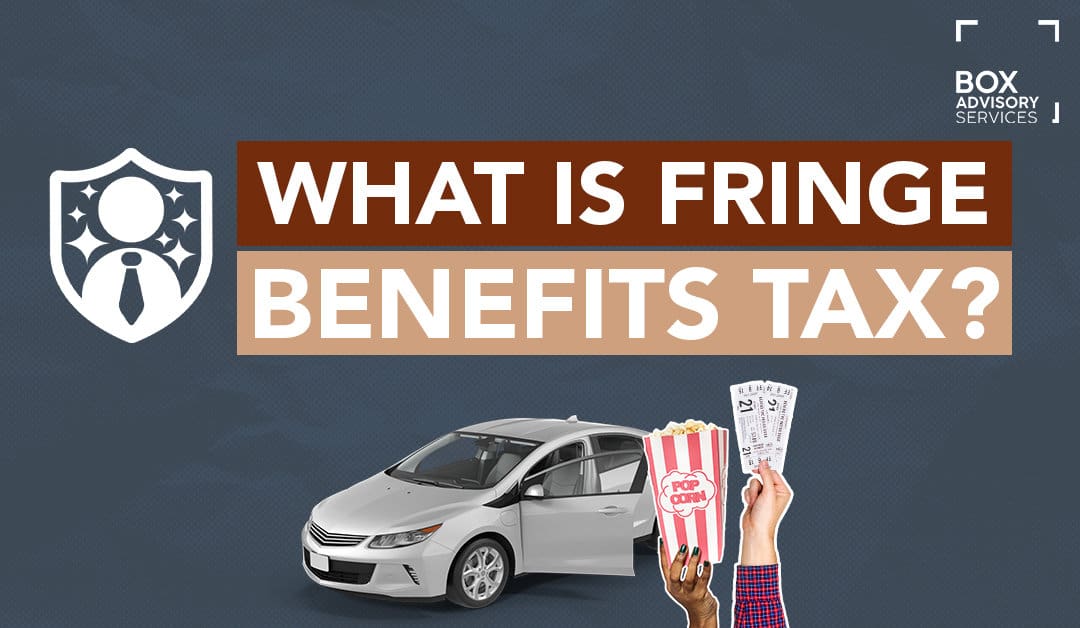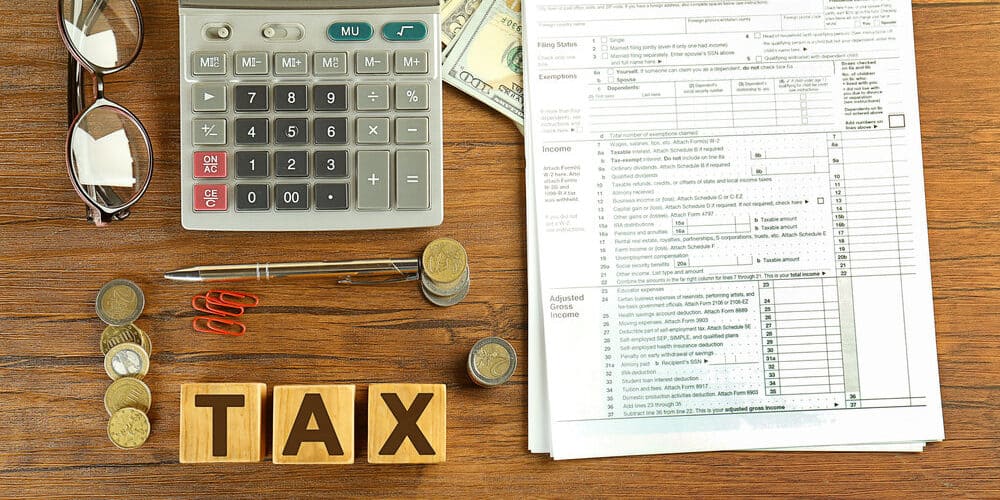
BY
|
The Ultimate Guide on Fringe Benefits Tax
As a business owner, you could be liable for fringe benefits tax by providing benefits to your employees, or even to yourself.
While this is one of the best ways to reward and acknowledge their contributions to your business, if you’re going to provide fringe benefits to your staff or yourself, there’s some vital information that you need to know about your tax obligations.
It’s not all bad news though, the Australian Tax Office does allow for some fringe benefit exemptions.
In this article, I’ll guide you through all you need to know about Fringe Benefits Tax.
What Is Fringe Benefits Tax (FBT)?
A fringe benefit is a form of remuneration paid to the employee (or their associate) in addition to their salary or wages.
Suppose you’re a director of a company and pay yourself as an employee. If that is the case, then any benefits you incur, in addition to your salary, will also be considered fringe benefits.
Fringe benefits include, but are not limited to:
- providing an employee with an interest-free loan;
- allowing an employee to use a work vehicle for their own private purposes;
- reimbursing an employee for their children’s school fees;
- paying an employee’s health insurance; and
- paying for entertainment packages such as hosting a Christmas party for the employees and their partners.
Example 1:
Jesse is a director and employee of a small IT company in Cleveland, Queensland. The company owns a vehicle so that the IT specialists can travel to client call-outs.
Jesse is allowed to take the car home on weekends to use for his private use. He generally uses the vehicle to take his son to his rugby matches, to do the grocery shopping and any other weekend activities.
Consequently, the IT company is providing Jesse with a fringe benefit.
If your company is providing its employees (or their associates) with fringe benefits, you’ll need to pay fringe benefits tax (FBT) at a rate of 47%.
The Fringe Benefits Tax Assessment Act 1986 indicates that a company is liable to pay FBT if a benefit is provided by:
- the employer;
- an associate of the employer; or
- a third party (who has an arrangement with the employer to provide the benefit)
According to the Australian Tax Office (ATO), FBT is separate to income tax and is calculated on the taxable value of the fringe benefit.
How Is Fringe Benefits Tax Calculated?
The ATO doesn’t notify employers regarding how much fringe benefits tax they are required to pay. So, you will have to self-assess your FBT liability each year.
The FBT year runs from 1 April – 31 March.
The due date for lodgment and payment is 21 May, but if you lodge through a tax agent, then your due date is extended to 25 June.
The ATO provides the following step-by-step guiding to calculate your FBT:
- Step 1: calculate the total taxable value of the fringe benefits that you provided to employees during the FBT year.
- Step 2: calculate your “Type 1” benefits by working out how much of the total taxable value of the fringe benefits that you can claim a goods and services tax (GST) credit for.
- Step 3: calculate the grossed-up* taxable value of your “Type 1” benefits by multiplying your step 2 (above) by the gross-up rate. The current rate is 2.0802.
* Employers are required to ‘gross-up’ the value of the benefit provided, as income tax is not paid on fringe benefits. The ‘grossed-up value’ of the benefit is the amount that you would have received in your gross salary if you would’ve paid for the benefit yourself.
- Step 4: calculate your “Type 2” benefits by working out how much of the total taxable value of the fringe benefits that you can’t claim a GST credit for.
- Step 5: calculate the grossed-up taxable value of your “Type 2” benefits by multiplying your step 4 (above) by the gross-up rate. The current rate is 1.8868.
- Step 6: calculate your total fringe benefits taxable amount by adding together the amounts calculated in step 3 and 5.
- Step 7: calculate your FBT by multiplying the taxable amount from step 6 (above) by the FBT rate. The current rate is 47%
The ATO provides a calculator designed to help employers calculate the taxable value of a car fringe benefit as well as a calculator designed to help not-for-profit companies determine their payable FBT.
Example 2:
During the 2019/20 FBT year, the taxable value of Jesse’s car benefit was $8,125.
The car benefit is considered a Type 1 benefit because the IT company can claim a GST credit for it.
To determine the car benefit tax, you’ll have to complete the following calculations:
$8,125 x 2.0802 = $16,901.63 (this is the grossed-up tax value)
$16,901.63 (grossed-up tax value) x 47% = $7,943.76
Consequently, the IT company has to pay an FBT amount of $7,943.76 for allowing Jesse to use the company car for personal use over weekends.
On the other hand, if Jesse contributed to the cost of using the car (the fringe benefit), the IT company can reduce their FBT liability.
So if Jesse reimburses the company for 25% of the petrol cost of using the car, the IT company would only have to pay FBT on 75% of the petrol that is not reimbursed.
The calculation would look as follows:
$7,943.76 (the FBT) x 75% = $5,957.82
So, the IT company will only be liable to pay $5,957.82 for providing Jesse with a fringe benefit.
As you can see, the calculations can get a bit complicated when there are various factors to consider. It would be in your best interests to have an accountant prepare the FBT calculation and FBT Return for you.
What Benefits Are Covered Under the FBT Exemption?
The ATO does, however, allow for some fringe benefits to be exempt from fringe benefits tax.
Work-Related Items:
Provided that the items are primarily used to carry out the terms of employment, the following work-related items are exempt from FBT:
- protective clothing;
- portable electronic devices (such as mobile phones, laptops and GPS’s etc.);
- computer software;
- briefcases; and
- tools of the trade
Minor Benefits:
If the total taxable value (that is if it was taxed) of the benefit amounts to less than $300, and it’s unreasonable to treat it as a fringe benefit, then the employer will be exempt from paying FBT.
It’s essential to take note that the minor benefit has to be infrequent and irregular for the benefit to be exempt from FBT.
For example, as a gift to your employee’s at the end of the year, you host a Christmas Dinner. This isn’t a regular occurrence, and the cost per head for each employee was less than $300, so you will be exempt from paying FBT on this fringe benefit.
Taxi Travel:
Provided that the whole or part of the travel is directly between the employee’s place of work and home, any benefit arising from taxi travel is exempt from FBT.
Car Parking:
For car parking to be exempt from fringe benefits tax, the parking must not amount to a fringe benefit. You can view the car parking conditions that amount to a fringe benefit on the ATO’s website.
If, however, the car parking is provided by a small business entity or provided to an employee with a disability, the benefit will be exempt from FBT.
The exemption will only be available to small business entities if the following conditions are met:
- the parking is not provided in a commercial car park;
- the employers are not a government body or a listed public company; and
- the employer qualifies as a small business (i.e. your total gross income is less than $10 million).
Living Away From Home Allowance (LAFHA):
Suppose an employer pays an allowance to their employee to cover the expenses of having him/her live away from home to perform their employment duties. If that’s the case, a fringe benefit may arise.
However, the total taxable value of the LAFHA fringe benefit can be reduced by costs relating to accommodation, food and drink where:
- your employee has a home in Australia;
- your employee provides you with a declaration about living away from home; and
- the fringe benefit relates to the first 12-months at a particular work location.
Emergency Assistance:
Suppose one of your employees is impacted or potentially impacted by a natural disaster (or an accident, for example) and you decide to provide him/her with certain benefits. In that case, those benefits may be considered emergency assistance and exempt from FBT.
To read more on FBT concessions, you can access the ATO’s website here.
What Are the 2015 Budget Changes and How Does It Impact Businesses?
In 2015, the Federal Government proposed various changes to the entertainment benefits in its 2015-16 budget.
A $5,000 per year, per employee, grossed-up limit was introduced for the value of fringe benefits that are exempt from FBT.
Institutions that are exempt from FBT include:
- registered public benevolent institutions endorsed by the ATO such as hospices, aged care services and providers of subsidised housing for people in need;
- Registered health promotion charities approved by the ATO such as community health care provides; medical research organisations and organisations who create awareness around preventing certain diseases;
- public or not-for-profit hospitals; and
- the public ambulance services.
The limit was imposed explicitly for employees of these institutions concerning:
- salary sacrificed meal entertainment expenses; and
- salary sacrificed entertainment facility leasing expenses.
The limit was introduced because there were previously no limits on meal entertainment expenses, and they were reported between $17,000 and $30,000 per year.
All entertainment fringe benefits provided by for-profit companies, including meals, were always subject to FBT. So the exemption limit does not apply to profit-making entities.
The limitation measures also proposed to have all meal entertainment benefits reportable.
What Is Reportable Fringe Benefits Tax (RFBT)?
Suppose the total taxable value of the fringe benefits provided to an employee (or their associates) exceed $2,000.
If that is the case, then the employers are required to gross-up the amount and report it on the employee’s PAYG payment summary.
While the amount is not included in your assessable income, and therefore not taxed, RFBT can be used to determine whether you’re eligible for various benefits or liable for certain obligations.
These include determining, amongst other things, your:
- liability to the Medicare levy surcharge;
- family tax benefits;
- entitlement to the private health insurance rebate;
- your Higher Education Loan Program repayments.
Key Takeaways
Fringe benefits may be a crucial part of your business and can be an effective way of attracting dedicated employees.
However, if you decide to incentivise your employees by providing fringe benefits, you should ensure that you understand your fringe benefit tax obligations.
While fringe benefits attract various tax obligations, the ATO does allow for some exemptions for benefits that amount to less than $300.
If you aren’t sure how to calculate your FBT or you wish to enquire about whether or not you qualify for an exemption, Box Advisory Service can guide you in the right direction. Alternatively, if you’re aware that you need to pay FBT, then we can assist you with your FBT returns.
To find out how we can help you make FBT simple and easy, book in a free consultation today.
Sign up to our monthly newsletter where we share exclusive small business and contractor advice!
Disclaimer:
Please note that every effort has been made to ensure that the information provided in this guide is accurate. You should note, however, that the information is intended as a guide only, providing an overview of general information available to contractors and small businesses. This guide is not intended to be an exhaustive source of information and should not be seen to constitute legal or tax advice. You should, where necessary, seek a second professional opinion for any legal or tax issues raised in your business affairs.




